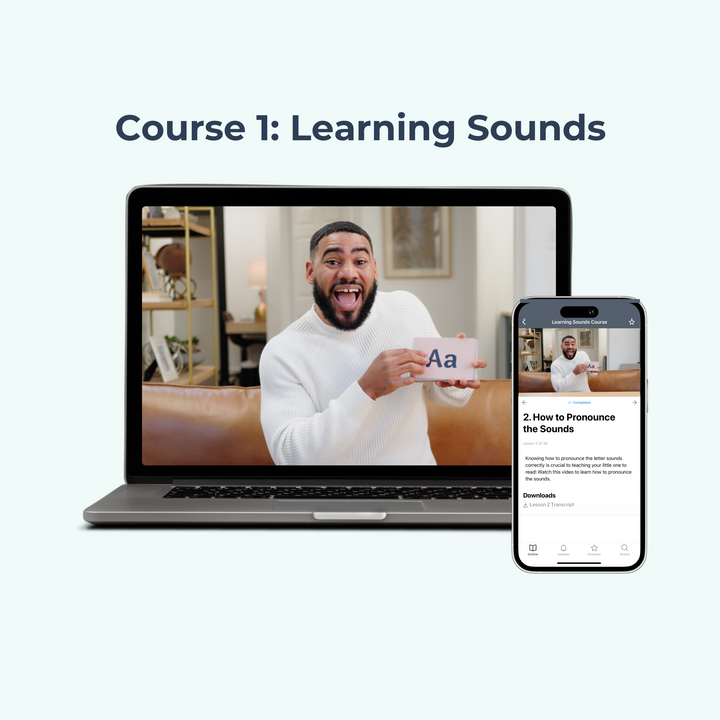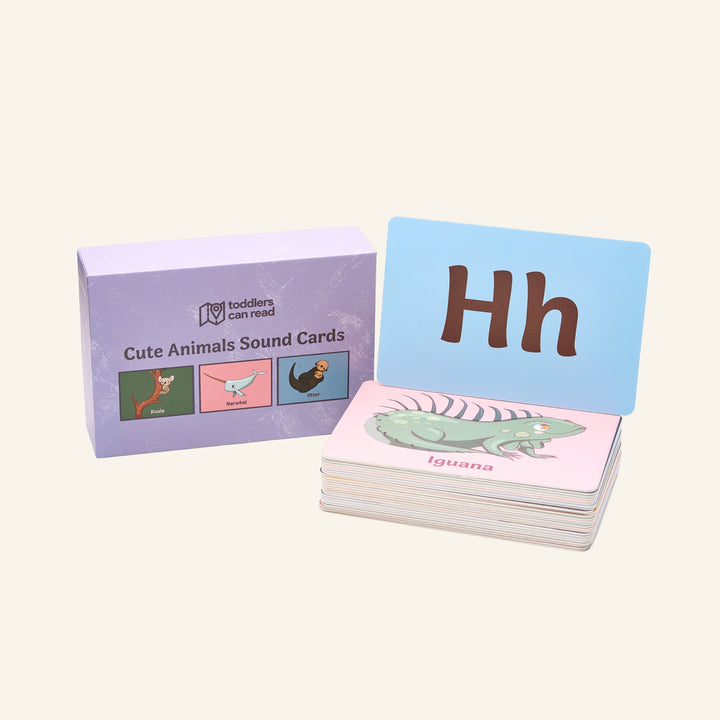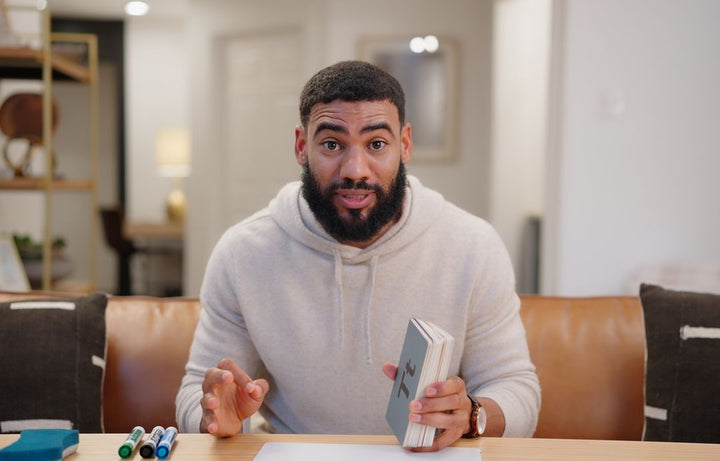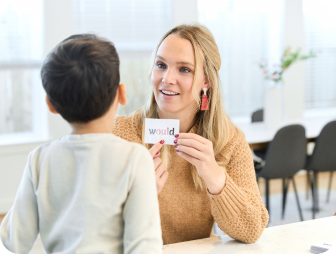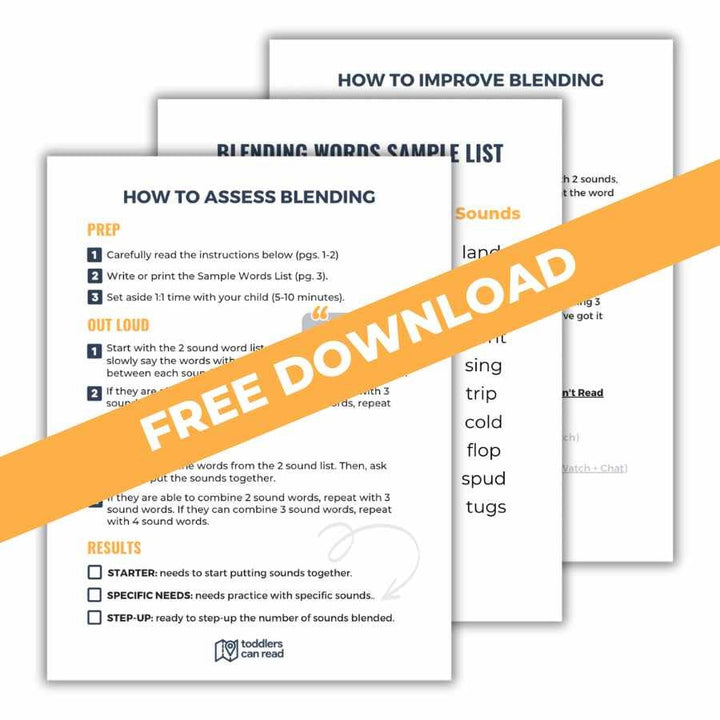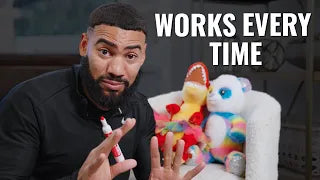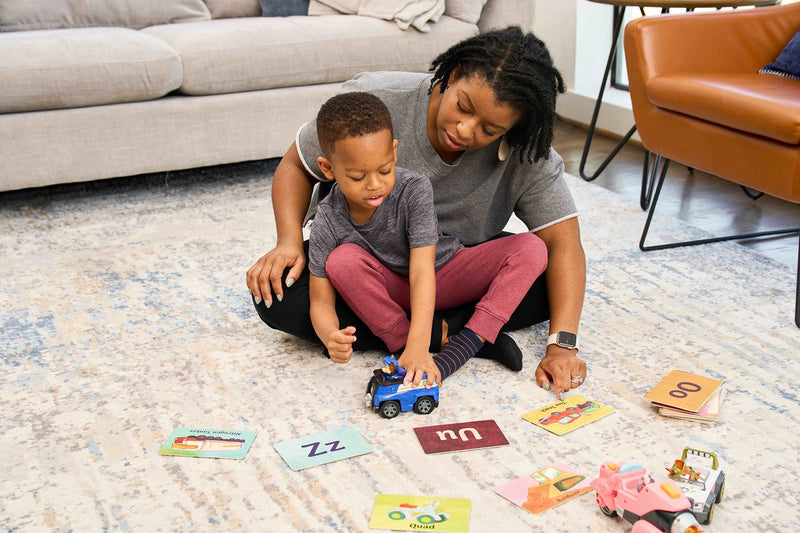Most parents want to help their kids read well. But figuring out how to help can be intimidating. Especially when you come face-to-face with reading science jargon.
In this blog post, I break down three of the most common—and most critical—reading concepts: phonological awareness, phonemic awareness, and phonics. By the end you'll understand how these three pieces work together, so you'll feel more confident in your ability to help your child become a strong reader.
What is Phonological Awareness?
Phonological awareness is the ability to hear and "play with" the many different parts of spoken words. Phonological awareness focuses on a child's ability to hear and play with the many different parts of spoken words (e.g., words, syllables, rime).
When kids have well-developed phonological awareness, they can hear:
- Each word in a sentence.
- Each syllable in a word.
- The onset (beginning) and rime (ending) of words.
- Different sounds in a word (see phonemic awareness).
Although these skills may seem simple, phonological awareness can be challenging for many children. And when kids struggle hearing these different parts of spoken words, they have trouble reading them.
That's especially true of the last example: phonemic awareness.
What is Phonemic Awareness?
Phonemic awareness is a type of phonological awareness—the ability to hear and play with the smallest units of sounds or phonemes.
Phonemic awareness skills include:
- Phoneme segmentation—Breaking down words into their smallest sounds. For example, "tap" can be broken down into /t/, /a/, and /p/.
- Phoneme blending—Putting sounds together to read words. For example, blending /t/, /e/, and /n/ together makes the word "ten."
- Phoneme substitution—switching one sound for another to make a new word. For example, if you switch the /c/ in "cat" with /h/, you make the word "hat."
- Phoneme deletion: Taking away a sound in a word to make a new word. For example, if you take away the /t/ sound from "trip," you get the word "rip."
Once kids have developed phonemic awareness‚Äìwhen they're able to literally hear sounds—they can begin associating those sounds with their corresponding letters (or groups of letters).
That's where phonics comes in.
What is Phonics?
Phonics teaches readers which letters represent which sounds and how to put those letter sounds together.
The English language is like a code that uses symbols (letters) to represent sounds, and phonics is the key to unlocking this code. By working on phonics, your little one will be able to:
- Say the sound each letter represents.
- Read words by blending (written) letter sounds together.
- Spell words by breaking them down into their individual sounds.
How Phonological Awareness, Phonemic Awareness, and Phonics Work Together
Phonological awareness helps build your child's listening skills so that they can "play with" larger sounds. Phonemic awareness builds on those listening skills so that your little one can hear and manipulate even the smallest sounds (phonemes).
When your little one has the phonemic awareness skills they need to identify and combine sounds to say words, they can then begin naming and blending written sounds to read words (phonics).
How to Work on Phonological Awareness, Phonemic Awareness, and Phonics at Home
Phonological awareness, phonemic awareness, and phonics are three of the most important parts of learning to read. As a parent, you have more opportunities than anyone else to help your child develop these skills. And you can do so by including simple games into your day-to-day life.
At-Home Activities to Develop Phonological Awareness- Read stories together and point to the words as you go.
- Clap and count the syllables in words.
- Say a word and ask your little one to come up with other words that end in the same sound.
- Ask your child to name things in the room that start with a specific sound. For example, you could say: "What do you see in this room that starts with the /b/ sound?"
- Say a word and ask your little one to tell you the sounds in the word. For example, if you said "tap," your little one would say "/t/, /a/, /p/."
- Break a word down to its individual sounds and ask your little one to blend them together. My son and I love playing this game when we have a couple of extra minutes together.
- Say a word and ask your little one to change the first sound to make a new word. For example, if you said "top," they could say "mop," "hop," "cop," etc.
- Say a word and ask your little one to take one of its sounds away. For example, you could say, "Tell me what the word 'tap' sounds like without the /t/ sound."
At-Home Activities to Practice Phonics
Once your child is ready for phonics, learning the letter sounds is the first step. And despite what a lot of folks think, learning the letter sounds can be one of the most fun and engaging parts of learning to read!
Here are just a few letter sound games that the families taking my courses have shared with me.
And if you're interested in teaching your little one the letter sounds but aren't sure how, my Learning Sounds Course gives you a step-by-step plan. Thousands of parents and caregivers have learned my developmentally appropriate approach to early literacy. You can, too.
Phonological Awareness, Phonemic Awareness, and Phonics: The Three Pillars of Reading
In summary:
- Phonological awareness helps our little ones hear and play with the many different parts of spoken words (e.g., words, syllables, rime, sounds, etc.).
- Phonemic awareness helps them hear and play with the smallest units of sounds in each word.
- Phonics teaches them which letters represent which sounds and how to put those letter sounds together to read words.
All three of these skills work together to help your child learn how to read. All kids need to be taught them explicitly, rather than just assuming they'll "pick it up."

To learn more about how to help your child become a stronger reader, check out my free beginning reader workshop, through which you'll learn a quick and easy approach to teaching phonics (and phonemic awareness!) to your little one.
